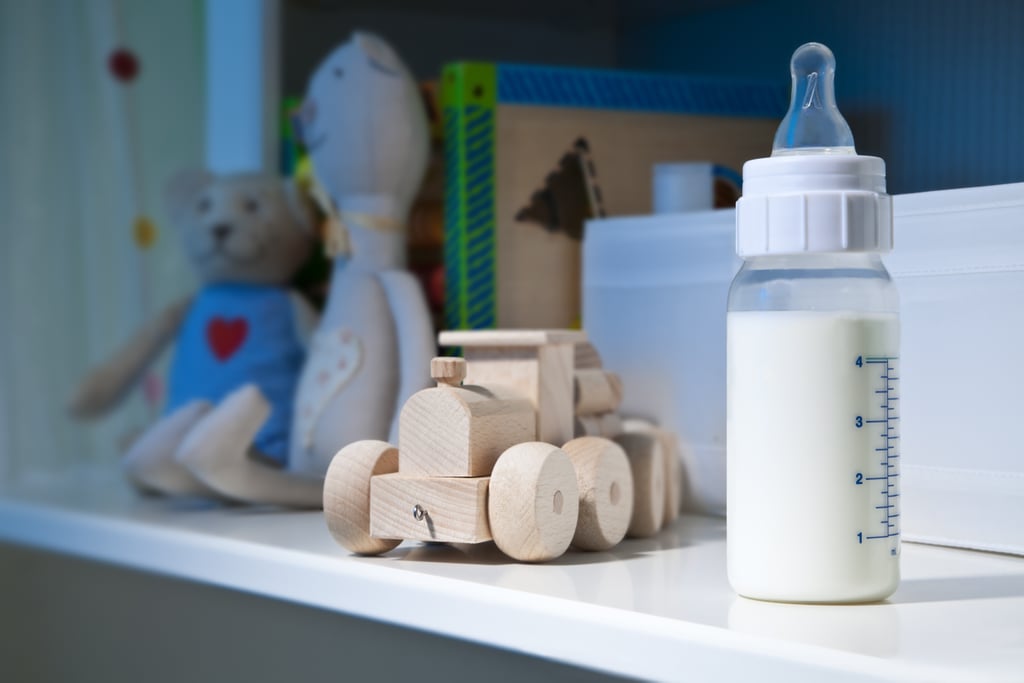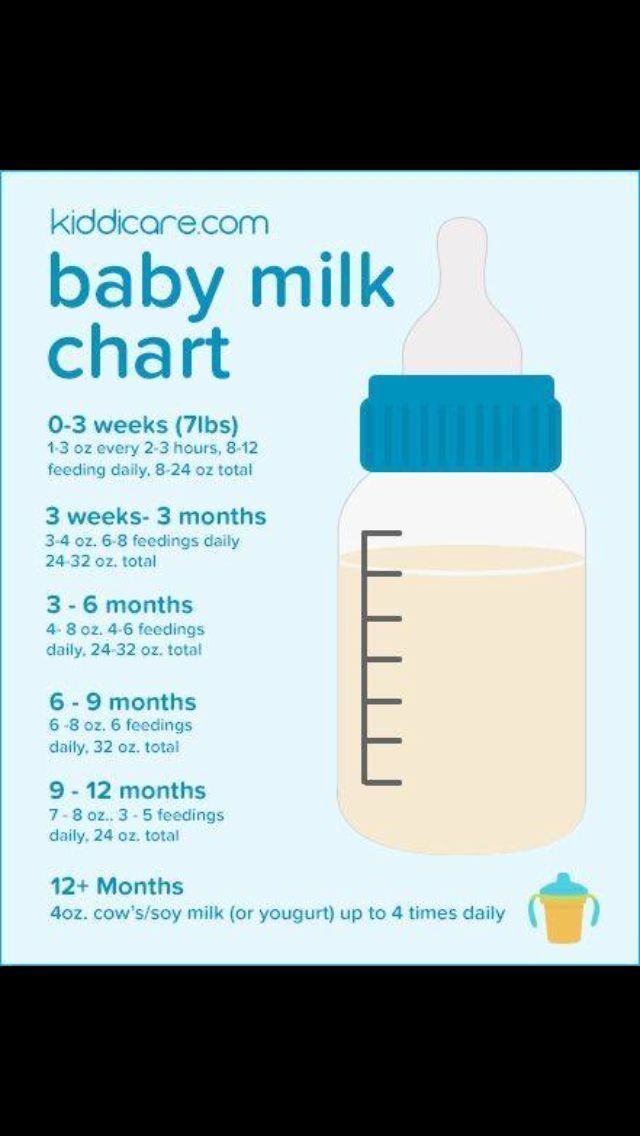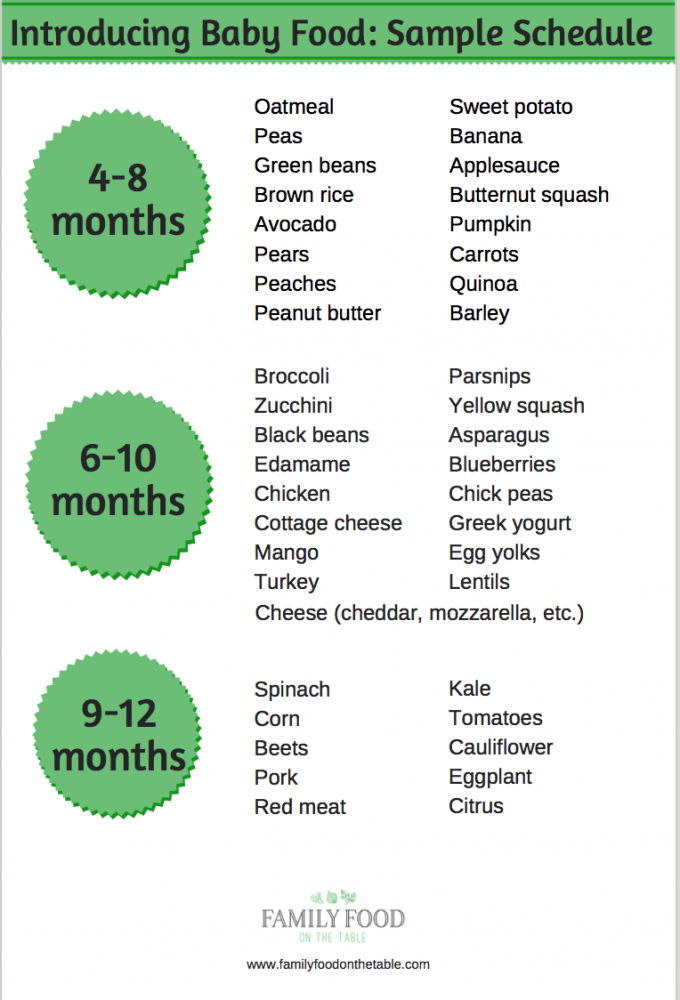Can i over feed my baby
How To Tell If You're Overfeeding Baby
We spend so much time fussing over whether baby is getting enough formula or breast milk—and for new parents it can be hard to tell what’s actually enough. Many parents may try to coax baby to finish their bottle or worry that baby isn’t eating enough, when really, baby has just had their fill. So can that well-intentioned fussing possibly lead to overfeeding baby?
Keep in mind that signs of a healthy baby may differ across cultures. “Different cultures have different feelings about how much a baby should eat, how often they should eat and what they should look like,” says Alanna Levine, MD, a pediatrician at Orangetown Pediatric Associates in Orangeburg, New York. Some parents consider a roly-poly baby a sign of a job well done, while other parents see a round baby and visualize an obese teen.
While cultural perceptions of a healthy baby may vary, when it comes to feeding, there are few things to keep in mind. Read on to learn how overfeeding baby can happen, signs to look for and what to do going forward.
In this article:
Can you overfeed a baby?
What leads to overfeeding?
Signs of overfeeding baby
How to avoid overfeeding baby
Can You Overfeed a Baby?
You can probably breathe a sigh of relief: Overfeeding baby is almost impossible, and most of the anxiety over babies’ food intake and appearance is pointless. “If baby is gaining weight and growing and your pediatrician isn’t concerned, you don’t need to worry,” Levine says. Different babies grow at different rates and eat different amounts at different times.
Babies come with an incredibly sophisticated self-regulation system: When they’re hungry, they eat, and when they’re full, they stop. (Sadly, we’ve lost this mechanism by the time we become parents.) So when babies turn away from the bottle or breast and refuse to even consider another nip, they’re telling you they’re full. When baby keeps coming back for more, that’s a sign they’re truly hungry (even if they just finished a full six ounces!).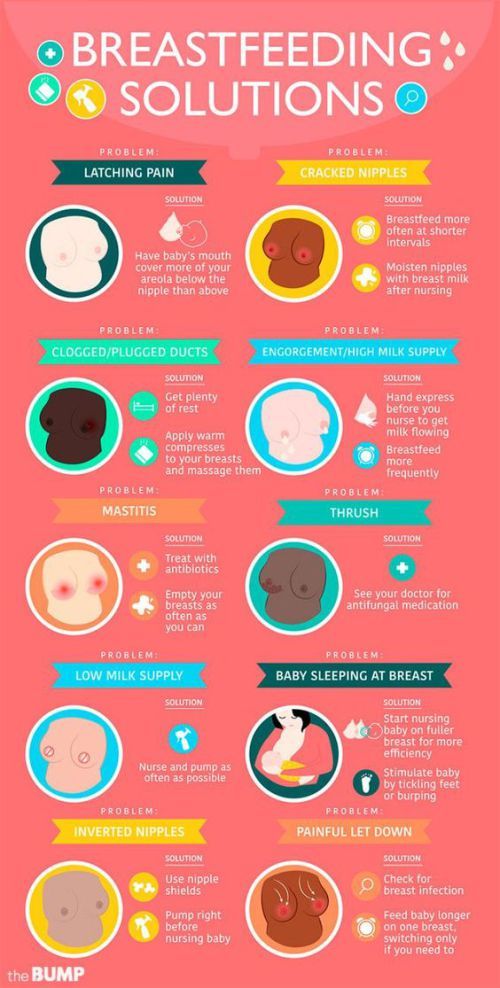
Overfeeding breastfed babies vs. formula-fed babies
Pediatricians Dina DiMaggio, MD, and Anthony F. Porto, MD, MPH, authors of The Pediatrician’s Guide to Feeding Babies and Toddlers, echo the importance of listening to your child’s cue, regardless of whether they’re breastfed or formula-fed. “We are often asked, ‘how come my child didn’t finish their bottle of formula?’ but are rarely asked that when children are breastfed.” (Probably because it’s a lot easier to see—and worry about—how much milk went into a bottle.)
On average, a full-term newborn drinks 2 ounces of formula per bottle every three to four hours, or breastfeeds on demand (about eight to 12 times a day), according to DiMaggio and Porto. At one month old, baby will likely drink 3 to 4 ounces of formula per bottle every three to four hours, while a breastfeeding baby may feed approximately seven or eight times a day. This pattern of baby drinking more ounces of formula or breastfeeding fewer times a day lasts until they are eight to 12 months old, at which point baby may drink seven to eight ounces of formula per bottle or breastfeed three to four times a day.
While these figures will vary with each child, it’s important to remember it’s perfectly normal for baby not to finish their bottle, as long as they’re hydrated and eating enough throughout the day. “Infants have a better understanding of when they’re full and, unlike most adults, don’t just eat whatever serving size is put in front of them,” DiMaggio and Porto say.
What Leads to Overfeeding?
Overfeeding baby is very rare, but it can happen. It’s more common in bottle-fed babies, simply because it’s easier for parents to see how much food their child is consuming. It also takes less effort to drink from a bottle, so babies (who love to suck) may inadvertently get too much milk while feeding.
If you’re concerned about possibly overfeeding baby, talk to your pediatrician. The doctor will look at baby’s length, weight and development, but as long as baby is thriving, they’re probably eating just fine.
Signs of Overfeeding Baby
The good news is, since you’ll likely be visiting a pediatrician often in first few months, you can track baby’s weight gain and feeding patterns.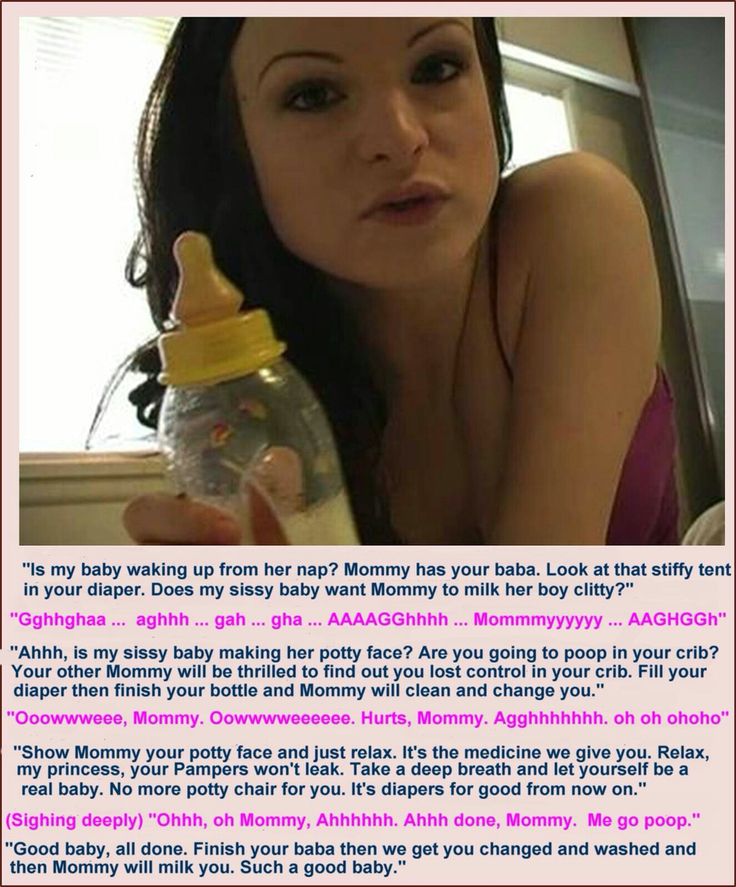 But don’t rely on weight as an indicator of whether you’re overfeeding baby. Instead, spitting up could be a sign you’ve pushed baby to take in extra food—for example, if baby spits up after draining a bottle you kept offering after they turned away. But more often than not, spitting up is a typical infant reaction or reflux.
But don’t rely on weight as an indicator of whether you’re overfeeding baby. Instead, spitting up could be a sign you’ve pushed baby to take in extra food—for example, if baby spits up after draining a bottle you kept offering after they turned away. But more often than not, spitting up is a typical infant reaction or reflux.
If you’re worried baby is eating too much for their age or has symptoms of vomiting, your pediatrician might recommend limiting how many ounces baby is drinking or how many times they feed, DiMaggio and Porto say. In most cases, however, as long as baby is healthy and doing well, feeding changes aren’t necessary.
How to Avoid Overfeeding Baby
If you learn you’ve been overfeeding baby, make a point of respecting your child’s feeding cues going forward. “If baby turns away before the bottle is finished or before your usual nursing time is up, accept the fact that they may not be hungry now,” Levine says. Don’t focus on the numbers: It doesn’t matter how many ounces baby finishes at each feeding. What matters is that baby is healthy and happy overall.
What matters is that baby is healthy and happy overall.
Updated February 2020
Expert bios:
Alanna Levine, MD, is a pediatrician at Orangetown Pediatric Associates in Orangeburg, New York, and works on staff at Englewood Hospital and Medical Center in New Jersey. In addition, she serves as a spokesperson for the American Academy of Pediatrics.
Dina DiMaggio, MD, and Anthony F. Porto, MD, MPH, are co-authors of The Pediatrician’s Guide to Feeding Babies and Toddlers: Practical Answers to Your Questions on Nutrition, Starting Solids, Allergies, Picky Eating and More, as well as spokespeople for the American Academy of Pediatrics. DiMaggio is a clinical assistant professor in the department of pediatrics at NYU Langone in New York City, and Porto is a pediatric gastroenterologist at Yale New Haven Health and medical director of the Yale Pediatric Celiac Program in New Haven, Connecticut.
Please note: The Bump and the materials and information it contains are not intended to, and do not constitute, medical or other health advice or diagnosis and should not be used as such. You should always consult with a qualified physician or health professional about your specific circumstances. Plus, more from The Bump:
Your Ultimate Guide to How to Bottle-Feed a Baby
Breastfeeding 101: How to Breastfeed Baby
What You Need to Know About Baby Growth Spurts
Can You Overfeed a Baby?
Categories: Babies, Nutrition, Tips / How-TosBringing a baby home for the first time—and the blur of days, weeks and months that follow—is an exhilarating, nerve-wracking, sleep-deprived time. Especially for first-time parents, now is when the self-doubt, panicked questions and midnight Google sessions may begin to ramp up.
Why is my baby not eating? Is my baby getting enough nutrients? Am I doing this right?!
In this FAQ, we focus on questions around overfeeding a baby—something many new parents worry about (but don’t need to focus on!). If there’s one thing you should take away from this post, it’s that babies are extremely good at self-regulating their intake. You rarely (if ever!) have to worry about overfeeding your baby—but if you’re looking for a little more insight, check out our deep dive into the topic.
1. Can you overfeed a baby?
While it is certainly possible to overfeed a baby, most infant nutrition experts agree that it is fairly uncommon. As we noted earlier, babies are innately capable of self-regulating their intake; they eat when they’re hungry and stop when they’re full.
Just because it’s rare, however, doesn’t mean that it never happens. The likelihood of overfeeding a baby depends on the type:
- Breastfeeding: It’s very to hard to overfeed a breastfed baby.
 When they’ve reached fullness, they’ll pull away or simply stop sucking.
When they’ve reached fullness, they’ll pull away or simply stop sucking. - Bottle feeding: Whether breastmilk or formula, bottle-fed babies can be more prone to overfeeding. We’ll discuss several reasons why in question #3.
2. What are the most common signs of overfeeding a baby?
So how can you tell if you’re overfeeding your little one? Watch out for these common signs of overfeeding a baby:
- Gassiness or burping
- Frequent spit up
- Vomiting after eating
- Fussiness, irritability or crying after meals
- Gagging or choking
Many babies do these things on a regular basis—which is why there’s no reason to panic the moment your baby exhibits these signs. Especially in the first few months of life, it’s common for your baby to spit up regularly without being overfed (keep your burp clothes handy!). If you’re still worried, simply keep an eye on if the behaviors repeat over time, and check with your pediatrician before making any significant dietary changes.
3. What leads to overfeeding a baby?
Again, overfeeding a baby is uncommon, but here are some circumstances in which it might occur:
- Misread cues: Many parents misinterpret crying or waking as hunger cues and immediately offer food to soothe the baby. Although these behaviors can indicate hunger, they just as often have nothing to do with it.
- “Normal” eating expectations: Many parents have a set expectation of what a baby “needs” to eat, leading them to focus on hitting a particular target of exactly 6 ounces per sitting or exactly XYZ ounces per pound of body weight. Fixating on set nutrition goals may cause parents to overlook or ignore signs of satiation (which we discuss in question #4).
- “Normal” weight expectations: When babies lag behind in the growth charts, many parents worry about their lack of weight gain, which may cause them to encourage excessive feeding to catch up, despite it being perfectly normal for babies to put on weight at different rates.

- Difficulty with the bottle: When babies drink from a bottle, they have less control over the amount of milk consumed in each gulp. Well-intentioned parents may also coax their baby into finishing the entire bottle, regardless of hunger or fullness. Instead of trying to control your baby’s intake, allow them to dictate their natural feeding needs.
4. How do I know when my baby is full?
Fortunately, it’s not difficult to avoid overfeeding a baby as long as you know what to look for. Instead of relying on recommended nutrition targets or “normal” growth markers to build your feeding routine, pay attention to how your baby responds before, during, and after meals.
How your little one responds will help you determine whether your baby is hungry or full. A baby who is full may:
- Push the bottle or breast away
- Turn their head away from presented bottle or breast
- Spit out milk or formula
- Seem disinterested during feedings
- Fuss or squirm
- Begin falling asleep
- Decrease or stop sucking
- Extend and relax their fingers, arms and legs
- Arch their backs
As soon as you’ve noticed these signs of fullness, try to wrap up the feeding session. Avoid trying to finish the bottle or presenting the breast again—instead pay attention to your child’s fullness cues.
Avoid trying to finish the bottle or presenting the breast again—instead pay attention to your child’s fullness cues.
5. Can you overfeed a baby when starting solids?
Between 4 and 6 months of age, most babies begin to signal that they’re ready to start solids. Similar to bottle or breastfeeding, it is possible but relatively uncommon to overfeed a baby solids. To help give your baby the right nutrients, keep these two tips in mind:
- Focus on fullness cues. In many cases, the temptation to overfeed comes when caregivers rely on prepackaged jars to determine the proper portions. Rather than encouraging your baby to finish the entire jar of baby puree, watch for and honor the signs of fullness discussed above.
- Prioritize breast milk or formula. Even after you’ve introduced your baby to solids, the majority of nutrition during the first year of life should still come from breast milk or formula.
Becoming a parent for the first time is challenging and often anxiety-inducing, but understanding your baby’s hunger and fullness cues can help relieve any fears you may have about overfeeding your baby.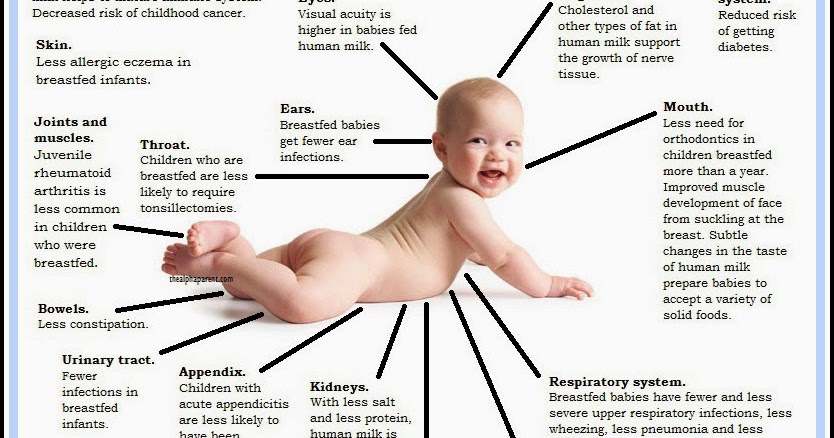 Pay attention to your little one’s gestures and behaviors, and mealtime will become a less worrisome, and more joyful time for all!
Pay attention to your little one’s gestures and behaviors, and mealtime will become a less worrisome, and more joyful time for all!
If you have questions or would like further guidance on feeding your baby, feel free to contact our Nurture Life team at [email protected].
Lara Field
Lara has been working with Nurture Life since its inception, collaborating with the culinary team on the creation of all menus and recipes to ensure they are nutritionally appropriate and correctly proportioned for every age and stage of a child’s development and providing pediatric nutrition expertise to Nurture Life customers. Lara is the owner/founder of FEED—Forming Early Eating Decisions, a nutrition consulting practice specializing in pediatric nutrition and digestive diseases. Lara has over a decade of experience in clinical practice at two of the top ranked pediatric hospitals in the country, Lurie Children’s Hospital and University of Chicago Medical Center. Lara received her B.S. from the University of Illinois at Urbana-Champaign and M.S. and dietetic internship from Rush University Medical Center in Chicago, Illinois. Lara truly enjoys the process of eating (and feeding!), from procuring the ingredients at various grocery stores and farmers markets, to organizing her pantry/refrigerator at home to make it easy to select healthy options, to preparing balanced meals with her children. Whether it be a decadent treat to a hearty, home-cooked meal, there is no greater satisfaction for Lara than enjoying food with her family.
Lara received her B.S. from the University of Illinois at Urbana-Champaign and M.S. and dietetic internship from Rush University Medical Center in Chicago, Illinois. Lara truly enjoys the process of eating (and feeding!), from procuring the ingredients at various grocery stores and farmers markets, to organizing her pantry/refrigerator at home to make it easy to select healthy options, to preparing balanced meals with her children. Whether it be a decadent treat to a hearty, home-cooked meal, there is no greater satisfaction for Lara than enjoying food with her family.
Back to Posts
Stay updated:
Thank you for subscribing!
Something went wrong. Please try again.
Postpartum and breastfeeding
Successful breastfeeding secrets
- Early attachment.

It is very important to breastfeed immediately after birth. The baby is placed on the mother's stomach "skin to skin". Do not immediately try to breastfeed your baby. Let him lie down and rest. Soon the baby will be ready to attach to the breast and may even try to crawl to the breast. Then he will begin to sniff and lick her, and only then will he try to capture. It's good if mom and baby spend about an hour together. This stimulates the production of oxytocin, and hence the production of milk. Oxytocin helps the mother relax, promotes easy delivery of the placenta, and reduces postpartum bleeding. And the baby receives immunoglobulins, which are contained in colostrum. This protects it from infections and helps to form its own microflora as soon as possible. The baby is colonized by maternal bacteria, which are not dangerous for him. If you do not populate the skin and mucous membranes with mother's bacteria, then the bacteria of the hospital, which are alien to the child's body and can be dangerous for him, will settle in an empty place. nine0005
nine0005
- Joint stay of mother and child.
This is necessary for the successful organization of breastfeeding and subsequent feeding. Mom and baby adapt to each other, mom learns to recognize her baby's signals and meet his needs. When the baby is next to the mother and suckles the breast without restrictions, the production of hormones responsible for lactation increases in the mother's body. Ideally, the child should not be separated from the mother at all, and all necessary medical procedures can be carried out in her presence. nine0005
- Feeding on demand
In spite of the clock, look at the child. Let's breastfeed for every peep, every worry of the child. Most of the baby's needs disappear by themselves when the mother takes him in her arms and puts him to her breast. In mom’s arms, with breasts in her mouth, the child will warm up, be comforted, satiated, get drunk, let out gas, relieve pain ... React immediately to the child’s anxiety, don’t wait, but he will burst into tears for real. Don't be afraid to hurt your child. There can be no talk of pampering yet. nine0005
Don't be afraid to hurt your child. There can be no talk of pampering yet. nine0005
It is the vital need of a child to be in the mother's arms and suckle at the breast. Let him do it as much as he wants. Frequent feedings stimulate milk production, while feeding by the clock leads to a reduction in milk production. Feeding on demand implies the requirement of the mother too. If your breasts are full, or the baby sleeps too long and rarely sucks, mom offers the breast herself. Don't be afraid to overfeed your baby. It is impossible to overfeed with breast milk. Breast milk is digested within 15-20 minutes and the baby's stomach is ready for the next portion (whereas the mixture is digested in 4 hours ).
- Exclusive breastfeeding.
This means that the baby should not be given anything other than the breast. With unlimited access to the breast, the child does not need water, glucose or tea. A small amount of colostrum in the early days can satisfy all the nutritional needs of the baby. Colostrum is very nutritious and contains a large amount of immunoglobulin, which protects the baby. Due to the low content of water in colostrum, it protects the baby's kidneys. Also, colostrum has a slight laxative effect and helps to cleanse the child’s body of meconium well and thereby reduces the risk of jaundice. And later, up to 6 months the child does not need anything but milk.
A small amount of colostrum in the early days can satisfy all the nutritional needs of the baby. Colostrum is very nutritious and contains a large amount of immunoglobulin, which protects the baby. Due to the low content of water in colostrum, it protects the baby's kidneys. Also, colostrum has a slight laxative effect and helps to cleanse the child’s body of meconium well and thereby reduces the risk of jaundice. And later, up to 6 months the child does not need anything but milk.
- Comfortable posture
Mom needs to get comfortable so that she can relax during feeding, because feedings can be long. If the mother is located in an uncomfortable position, then she will quickly get tired, and will receive not pleasure from feeding, but negative. It should also be comfortable for the baby. It is necessary to make sure that he lies comfortably, is closely pressed to his mother, so that he does not have to reach for the breast and make efforts to keep the nipple in the mouth. nine0005
nine0005
- Correct grip
This is one of the most important aspects. Incorrect grip can lead to many troubles (pain during feeding, cracked nipples, lactostasis, lack of milk). Therefore, it is very important to initially attach the baby to the breast correctly and then make sure that the grip remains correct. Remember - if the grip is wrong, the mother should not experience pain. If there is pain, it should not be endured - you need to urgently correct the grip. And in this matter, the doctors of the Medical Center "Family Health" will always help you
- Night feedings
Night feedings are essential, especially during the first months. At night, the highest production of prolactin occurs, which is responsible for the production of milk. Therefore, in order to have enough milk, you need to apply at night or at least in the morning hours (from 3-00 to 6-00).
- Breast change.
There are different opinions about breast changes. You can feed for two hours with one breast, or you can change breasts several times in one feeding. The child should suckle the first breast for at least 20-30 minutes, after which he can be offered the second. The main thing is not to press the second breast until the child has emptied the first one properly. Both methods provide that the child receives not only the “front” milk, rich in water, lactose, minerals and proteins, but also the “back” milk, rich in fats, vitamins, enzymes, growth factors, satiety and sleep. nine0005
You can feed for two hours with one breast, or you can change breasts several times in one feeding. The child should suckle the first breast for at least 20-30 minutes, after which he can be offered the second. The main thing is not to press the second breast until the child has emptied the first one properly. Both methods provide that the child receives not only the “front” milk, rich in water, lactose, minerals and proteins, but also the “back” milk, rich in fats, vitamins, enzymes, growth factors, satiety and sleep. nine0005
- Pumping.
Milk is produced on demand. No need to express leftovers after feeding. This is a waste of time and may lead to hyperlactation. Pumping is necessary in the following cases:
* the mother has problems with breasts (cracked nipples, lactostasis, mastitis)
* excess milk or hyperlactation (in this case, pumping should be stopped gradually)
* temporary weaning when the mother needs to undergo treatment not compatible with HW
* temporary separation of mother and child
* mother goes to work
* a supply of milk is needed.
- Breast care
Breasts should not be washed before every feeding. It is enough to take a shared shower once a day. Do not use soap to wash your breasts. It washes away natural lubrication from the nipples, dries the skin and contributes to the appearance of cracks. Give your chest air baths more often. If your milk leaks between feeds, put disposable or reusable special absorbent pads or clean rags folded several times in your bra. Pads need to be changed often enough to keep your breasts dry. nine0005
- How to tell if your baby is getting enough milk.
There are only two reliable ways to tell if a baby is getting enough milk. This is the so-called "wet diaper test" and control of weight gain. The essence of the 1st method is to calculate how many times a day your child pees. If a child pees at least 10 times for girls and 12 times for boys, then you have enough milk. In the first two weeks, the number of pee should not be less than the number of days lived from birth. nine0005
nine0005
Weight gain is determined once a week, and control weighings (before and after feeding) are not indicative . Fullness and, moreover, breast size is also not an indicator of the amount of milk. By about 1.5 months, lactation is established and the breasts may be soft, not full, and even appear empty. This means that there is as much milk as your baby needs. When more milk is needed, the baby will regulate its amount.
- Child weight
In the first days after birth, the baby loses weight. If weight loss is not more than 7%, there is nothing to worry about. The increase is calculated from the minimum weight. In the first month, the child has the right not to add or add not much. Up to 6 months, the minimum weight gain is 500 grams. per month or 125 gr. in Week. After 6 months, the child begins to move more, respectively, the increase decreases. Minimum - 300 gr. per month. The upper limit of the increase can be up to 2 kg.
- Bottles and pacifiers
Even a full bottle can harm breastfeeding. A dummy is generally an extra item. If necessary, give supplementary food for medical reasons or medicine, a bottle, can be easily replaced with a cup, spoon or syringe without a needle.
One of the dangers of the bottle is that it is easier to extract the liquid from it, it practically flows into the mouth by itself. After that, the baby does not want to work and get milk from the breast, when it can be easily obtained from a bottle. This provokes breast rejection. The second danger of the bottle is that breast sucking and bottle sucking are completely different. nine0005
- Child's chair for GV
In the first days the baby's stools are black and thick. It's meconium coming out. Then the color and consistency of the stool changes. Usually the child's stool on GV is mushy, mustard-colored. Also, the stool can be with greens, mucus, grains, foam. This should not be scary, you do not need to run to the doctors, take tests and treat a non-existent disease. Thus, intestinal dysbiosis manifests itself. At birth, the child's gastrointestinal tract is sterile. Then it is populated by microflora. This usually happens by about 6 months, after which it is already possible to introduce complementary foods to the child. In a child on HB in the first month and a half, bowel movement occurs almost after each feeding, then the stool decreases. In some children, the stool is reduced to 1 time in several days (up to 10 days) and this is not constipation. Just breast milk is very well absorbed. If the baby receives only breast milk, THE CHILD DOESN'T WORRY, THE CHAIR IS SOFT - DO NOT WORRY.
This should not be scary, you do not need to run to the doctors, take tests and treat a non-existent disease. Thus, intestinal dysbiosis manifests itself. At birth, the child's gastrointestinal tract is sterile. Then it is populated by microflora. This usually happens by about 6 months, after which it is already possible to introduce complementary foods to the child. In a child on HB in the first month and a half, bowel movement occurs almost after each feeding, then the stool decreases. In some children, the stool is reduced to 1 time in several days (up to 10 days) and this is not constipation. Just breast milk is very well absorbed. If the baby receives only breast milk, THE CHILD DOESN'T WORRY, THE CHAIR IS SOFT - DO NOT WORRY.
IF YOU HAVE ANY QUESTIONS OR PROBLEMS REGARDING BREASTFEEDING, YOU CAN ALWAYS CONTACT THE FAMILY HEALTH MEDICAL CENTER FOR CONSULTATION. THE DOCTORS OF OUR CENTER WILL ALWAYS GIVE YOU THE NEEDED HELP AND GIVE YOU A CONSULTATION.
"Children's City Polyclinic No. 51" unofficial site / Article "Breastfeeding"
About the benefits of full-fledged breastfeeding, if not everyone knows, then very many. Relevant information is distributed in antenatal clinics, hospitals, maternity hospitals and at specially organized lectures. In most maternity hospitals, babies are put to the breast in the first minutes after they are born, they are left with their mother in the same room, they give recommendations on preserving milk and feeding the baby at least up to a year. nine0005
What contributed to such changes in society, because even some twenty years ago the attitude to these aspects of life was completely different? The answer is simple - these are 10 principles regarding breastfeeding, the observance of which contributed to positive changes in society.
The WHO and UNICEF Ten Principles for Breastfeeding:
- Strictly adhere to the established rules of breastfeeding and communicate regularly to medical staff and women in labor.
 nine0008
nine0008 - Train medical personnel in the necessary skills to implement breastfeeding rules.
- Inform all pregnant women about the benefits and techniques of breastfeeding.
- Help mothers initiate breastfeeding within the first half hour after birth.
- Show mothers how to breastfeed and how to maintain lactation, even if she is temporarily separated from her children. nine0008
- Give newborns no food or drink other than breast milk, unless medically indicated.
- Practice 24/7 mother and newborn stay side by side in the same room.
- Encourage breastfeeding on demand rather than on a schedule.
- Do not give breastfeeding newborns any sedatives or devices that mimic the mother's breast (nipples, etc.). nine0008
- Encourage the establishment of breastfeeding support groups and refer mothers to these groups upon discharge from the maternity hospital or hospital.

From the content of all 10 principles, it is obvious that they cover the maximum number of possible issues in the field of breastfeeding. Thanks to their observance, any nursing mother can learn about the positive aspects of breastfeeding, find an answer to a question that has arisen, share her experience or learn something useful from the stories of other mothers; and the child - to receive the most valuable food that nature has provided. nine0005
Benefits for the baby
It is now well known that breast milk is the best food for babies. This is written on all packages of baby food, colorful posters in clinics and magazines for young parents report this. Most mothers dream of breastfeeding their baby and put in a lot of effort to keep breastfeeding.
Immune system
Protection of the immune system A baby is born very vulnerable and, once in the outside world, has practically no protection, except for the antibodies that he received while still in the womb. After birth, the baby can receive antibodies exclusively with mother's milk. Breast milk contains certain proteins that protect the baby from infection and infections. As the baby grows older, their content in milk increases. nine0005
After birth, the baby can receive antibodies exclusively with mother's milk. Breast milk contains certain proteins that protect the baby from infection and infections. As the baby grows older, their content in milk increases. nine0005
Food for development
Research has shown that breastfed babies have better intelligence and vision.
Healthy sleep
Mother's milk contains opioid substances that have a beneficial effect on baby's sleep. In addition, breastfed babies are calmer and cry less.
Contact
It is breastfeeding that contributes to the emotional development of the baby. In the process of feeding, the child not only receives food, but also experiences a sense of security and peace. nine0005
Feeling good
Breastfed babies are much less likely to develop food allergies. They are less likely to suffer from diarrhea, and the period of colic most often ends earlier in them than in artificial babies.
Prevention of obesity
It is simply impossible to overfeed a baby with breast milk. After all, the composition of milk depends on the needs of the baby and varies depending on the period of the day. While it is very easy to overfeed a baby with formula milk. Often, formula-fed babies are overweight. While breastfed babies develop harmoniously and gain weight gradually. nine0005
After all, the composition of milk depends on the needs of the baby and varies depending on the period of the day. While it is very easy to overfeed a baby with formula milk. Often, formula-fed babies are overweight. While breastfed babies develop harmoniously and gain weight gradually. nine0005
Teething, correct bite
In the process of sucking the mother's breast, the baby's facial muscles are strengthened. After all, much more muscles are involved in it than when sucking a nipple. Not surprisingly, "milk" babies develop gums and teeth more quickly. The correct bite is formed.
Benefits for the mother Postpartum recovery
While your baby is breastfeeding, your body releases the hormone oxytocin. It contributes to the contraction of the uterus and its early return to prenatal size. This is especially important in the first hour after childbirth. To avoid postpartum hemorrhage, a newborn baby must be attached to the breast immediately after birth. nine0005
Reproductive system rest
One third of breastfeeding women do not ovulate for 6 months to several years. Provided that the woman does not give the child a nipple and feeds him exclusively with milk (without supplementary feeding in the form of adult food or mixtures). A special role in this case is played by night applications (from 3 am to 6 am).
Provided that the woman does not give the child a nipple and feeds him exclusively with milk (without supplementary feeding in the form of adult food or mixtures). A special role in this case is played by night applications (from 3 am to 6 am).
Prevention of breast cancer
Doctors say that women who breastfeed are less at risk of developing breast tumors. Mammologists recommend breastfeeding until the age of two as a safe treatment for patients with mastopathy. nine0005
To be slim
Yes, breastfeeding helps to lose weight (despite the existing "myths"). The fact is that for the day a woman produces milk, her body spends over 500-700 calories. To successfully breastfeed a baby, it is not at all necessary to absorb food in large quantities. It is enough to eat right and at first do not forget about the diet of a nursing mother.
Prevention of postpartum depression
So, if a woman breastfeeds her son or daughter from birth, it will help to forget about this frightening combination of words in the very first days after the hospital.

